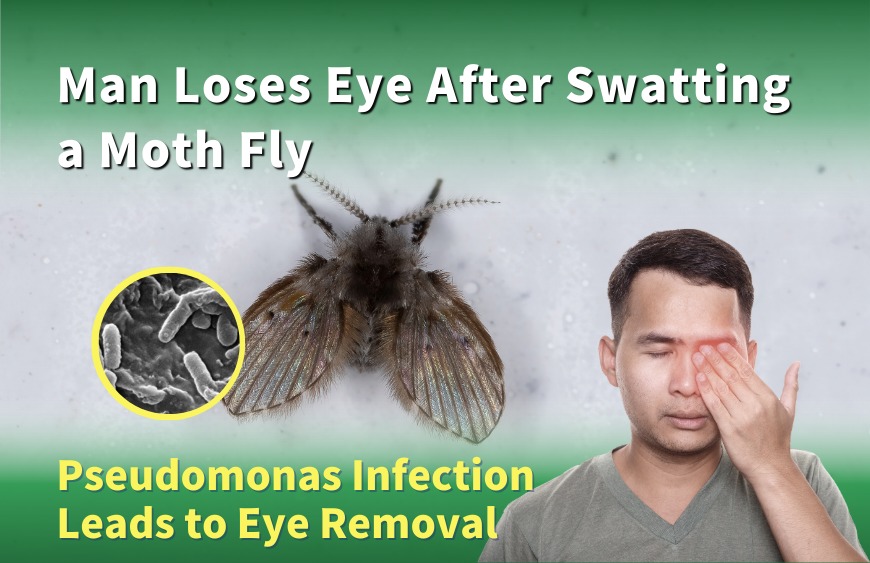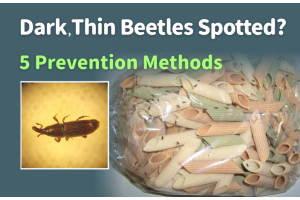Man Loses Eye After Swatting a Moth Fly - Pseudomonas Infection Leads to Eye Removal|Moth Fly Prevention Guide

A man in Shenzhen casually swatted a moth fly that had landed near his left eye. Shortly after, his left eye became red, swollen, and painful, showing symptoms of a Pseudomonas aeruginosa infection. The infection caused ulceration in and around the eye, ultimately leading to the surgical removal of his entire left eyeball.
Moth fly
Moth fly are typically no longer than 3mm including their wings. Their bodies and wings are covered in fine hairs and are entirely black. They resemble tiny flies with oversized wings, but upon closer inspection, their shape is similar to that of a moth.
Moth flies lay eggs in a mass of 30 to 100. These eggs hatch in less than 48 hours. The larvae and pupae of the moth fly live in the thin film found in drains, septic tank field lines or filter stones. They feed on sediment, decaying organic matter, and other debris, commonly found in the drains of sinks and bathtubs. Adult flies often rest on walls.
Simple 3-Step Prevention: Stop Them at the Source
- Regularly clean organic matter such as hair and skin flakes from drain openings and pipes.
- Check for and repair water leaks to reduce standing water and areas conducive to moth fly breeding.
- Periodically spray BioKill insecticide, which kills and prevents, to eliminate remaining adult flies.
BioKill Insecticide
- Exempted by the AFCD from requiring a poison label.
- Suitable for households with children.
- Naturally degradable, colorless & odorless.
- Wide-ranging efficacy - can eliminate various common household insect pests.
- Kill & Preventive Action; do not need to wait for pests to appear.
- Widely used in hospitals, schools, kindergartens, and residential areas.











